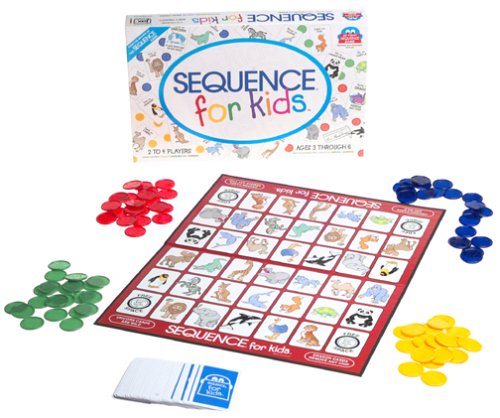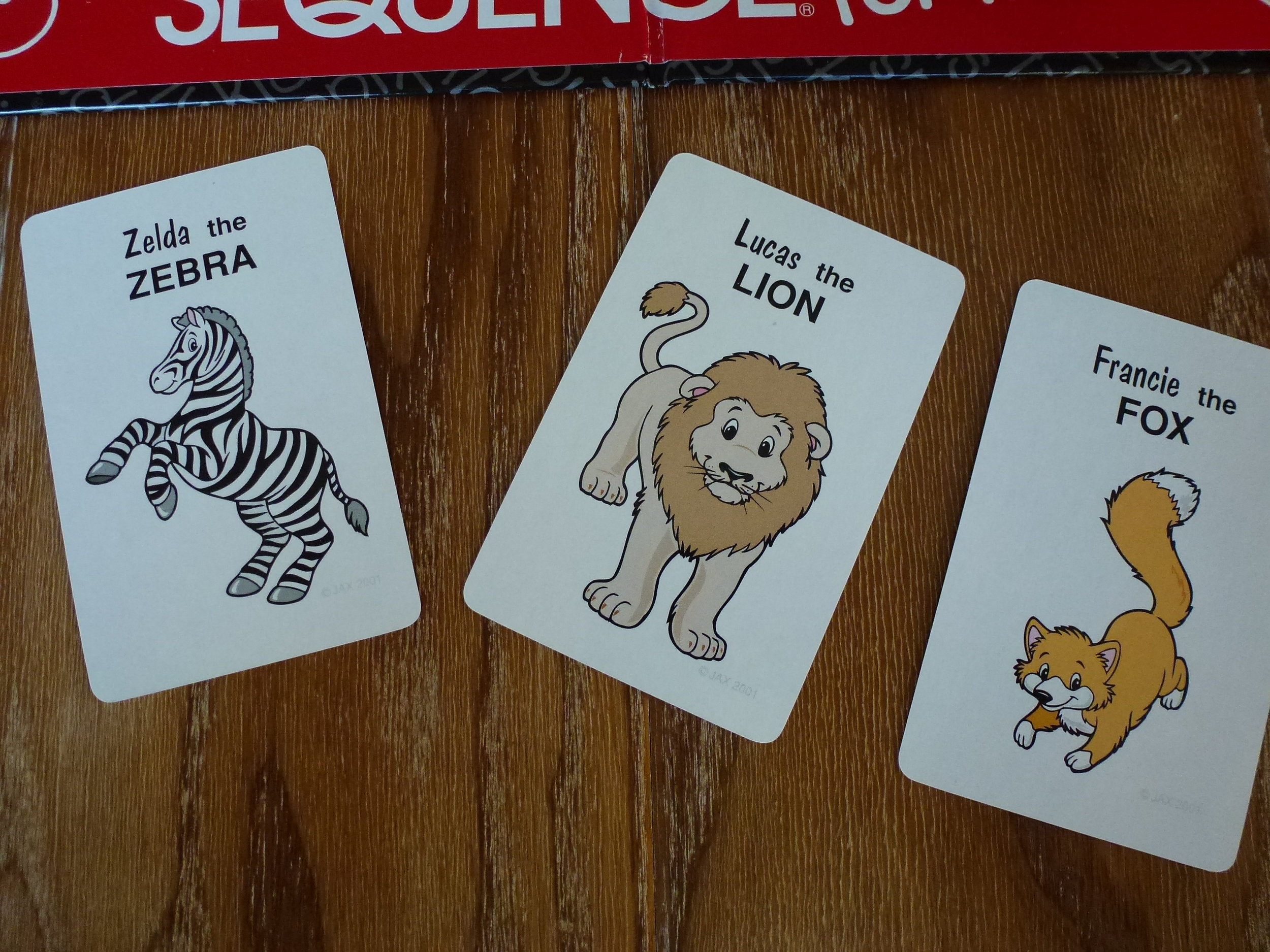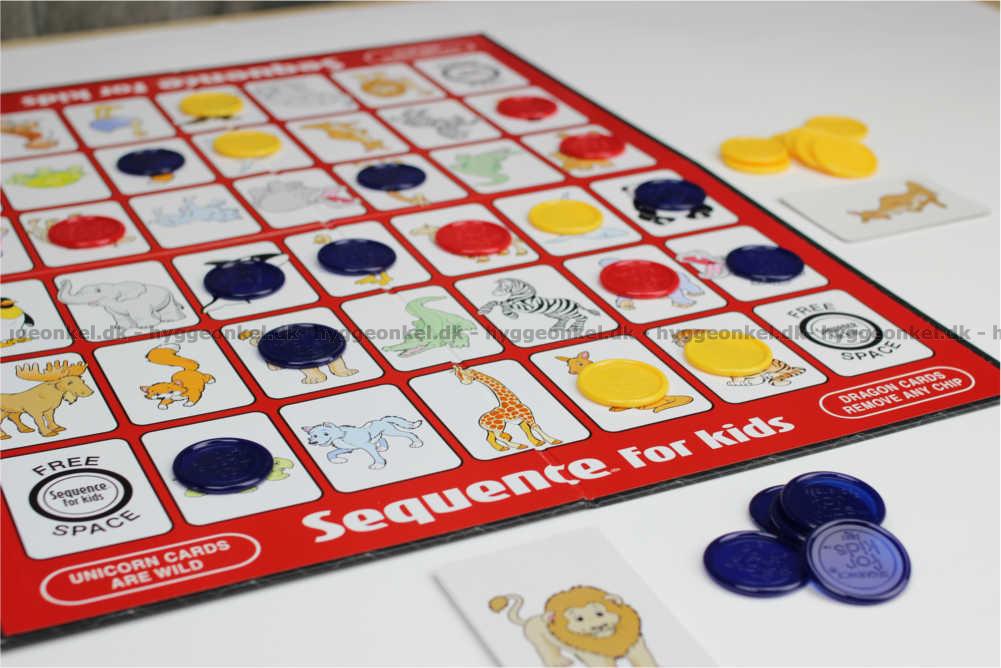Sequence for Kids - An Excellent Introduction to Board Games
Players: 2-4
Ages: 3 and up
Purchase: Buy on Amazon (affiliate link)
Math Ideas: Spatial reasoning, patterns.
Questions to Ask:
Which cards could you use to get a sequence?
Where am I trying to get a sequence? How could you block me?
What did I do wrong? Why is this not a sequence?
I played a lot of classic board games as a kid, but I got sick of them eventually. It seemed like a dead hobby: once you got sick of Monopoly, Scrabble, and Risk, what else was there?
Then my uncle brought Sequence to a family gathering and I fell in love with games again. I particularly enjoyed playing in teams, trying to work together with my partner without any direct communication.
My kids are a little too young for Sequence, especially my 3-year-old. Fortunately, the makers of Sequence have come out with Sequence for Kids, a game that keeps the spirit of the original game while making the rules accessible for kids as young as three.
How to Play
The original game of Sequence plays with a double deck of cards. Each person draws several cards to start the game. Then the game plays in rounds, with each person discarding one card, placing a token on its matching space on the board, and then drawing a new card. The first person to get five tokens in a row (known as a sequence) wins.
Sequence for Kids makes the board smaller and replaces the traditional deck of cards for a set of colorful animals. Otherwise, the game is played the same way. Players take turns discarding an animal card, placing a token on its matching space, and drawing a new card. The first person to get a sequence of four in a row is the winner.
Where's the Math?
As I said earlier, this game is accessible to young pre-schoolers, so it doesn't have a lot of what you might consider "school math." Nevertheless, the structure of Sequence for Kids lends itself to a lot of mathematical discussion.
First of all, kids get to practice matching and basic counting to four, which is a perfect number to work within during the first few years of life. Not only that, but the sequences can be vertical, horizontal, or diagonal. Your child will develop a lot of spatial awareness by looking for their possible sequences, especially those tricky diagonal ones.
Each animal card has two options for where it can be placed, so your child needs to think strategically about which space to cover with their token.
Lastly, there are a couple of special cards that can be used to place a token anywhere, or to remove a token from any space. When should you use these tokens? What's the best spot to block, or to remove a token from? These are the strategic, spatial questions that make Sequence such a fun game even for adults.
Questions to Ask
One of the hidden gems of this game is that it teaches kids the structure of how a game is played. My daughter hates being on a team with me. She wants to play by herself. This was one of the first games that was easy enough for her to play, yet fun enough that her older brother enjoyed himself as well.
Each player waits their turn, then discards, places a token, and draws a card. By repeating that set of steps over and over, my daughter began to understand what it meant to take turns, and how to complete several steps in the correct order.
To help her gain confidence in the routine of the game, I would often "forget" the steps. I'd put down two tokens or complete the steps out of order, and she would scream "NO!" Then I got to ask the question "What did I do wrong?"
Kids love being able to correct their parents, and being comedically wrong can definitely motivate your children to show you the right way to do something. I often count to ten in a ridiculous way (1, 2, 7, 36, w, 10!) just so my daughter will teach me the right way to count. She laughs along, not realizing that she's practicing a mathematical skill until it becomes rote memory.
In Sequence for Kids, I like to ask her "Is this a sequence?" and then point to three tokens in a row, or four tokens that form a different shape, just to see if she can verbalize why they are not a sequence. This is another great skill to build: She knows that those four tokens don't make a sequence, but can she explain exactly why? Over time, as her language becomes sharpened, she'll start building a mathematical framework for how you dispute and debate a topic in math.
Click here to buy Sequence for Kids on Amazon (affiliate link)





